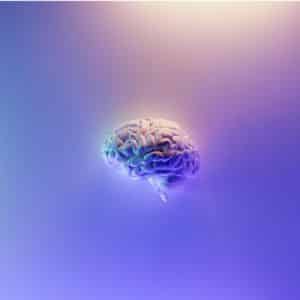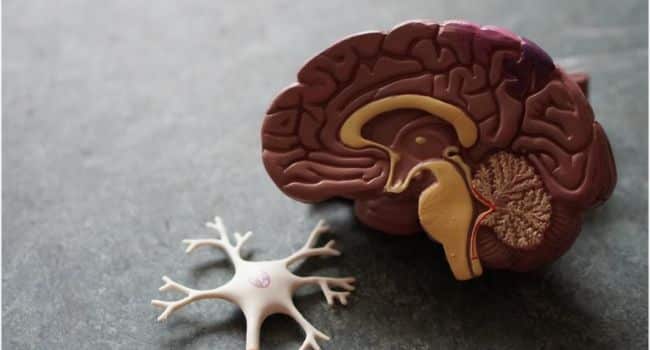Table of Contents
In a world where constant learning and retention of new information is vital, memory serves as the primary tool for such a process. Sitting at the top of this complex process is Alzheimer’s Disease (AD), a neurological condition that affects millions worldwide; disrupting not only their memory but also other cognitive functions. Below, we immerse ourselves fully into Alzheimer’s which includes the symptoms, stages, and possible treatment options available today.
An Introduction to Alzheimer’s Disease
Alzheimer’s disease is an irreversible, progressive brain disorder that takes a toll on a person’s thinking capabilities, memory, and ultimately, the ability to accomplish the simplest tasks. It is notoriously known as the most common form of dementia among older adults. People with Alzheimer’s experience an insidious onset, meaning the condition develops slowly and worsens over time, making it hard to establish an exact onset period. There are several Alzheimer’s stages, and as Alzheimer’s disease advances, symptoms become more severe.
The disease can lead to profound memory loss and can also affect a person’s ability to carry out daily activities such as driving, cooking, and even taking care of personal hygiene. Research suggests that Alzheimer’s disease is driven by genetic, lifestyle, and environmental factors that impact the brain over time. While it is not necessarily a part of normal aging, the highest risk factor for Alzheimer’s is indeed increasing age. Most affected individuals are 65 and older. However, in some rare cases, individuals in their 40s or 50s can also exhibit the symptoms of what is termed early-onset Alzheimer’s.
Moreover, the effects of Alzheimer’s disease are not limited to the individual; it also has a major bearing on caregivers and families of the persons affected. They often bear the physical, emotional, and economic burden of caring for their loved ones. Therefore, understanding the different dimensions of Alzheimer’s disease is necessary for managing the condition optimally.
Recognizing the Signs and Symptoms of Alzheimer’s
The earliest signs of Alzheimer’s often involve difficulty remembering newly learned information. This is because the condition first impacts the part of the brain that affects learning. However, a timely diagnosis can occur only when other symptoms are also present. These may include disorientation, behavioral changes, confusion about times and places, unfounded suspicions about friends and family, serious memory loss, and eventually, difficulty speaking, swallowing, or walking.
It’s important, however, to differentiate between Alzheimer’s-related memory loss and normal age-related forgetfulness. Living amidst an environment where forgetfulness or “brain fog” is often joked about, it might be easy to overlook some alarming signs. Constant forgetting or the inability to track monthly bills, remember dates, or ask for the same information repeatedly can point toward Alzheimer’s.
Another red flag is having trouble dealing with numbers or comprehending visual images. Some might even have difficulty following a recipe they’ve been using for a while or similar tasks that involve numbers. A certain degree of vision loss is common with age, but if difficulties with reading, gauging distance, or determining color contrasts become noticeable, it could be indicative of Alzheimer’s.
Understanding the Stages of Alzheimer’s

Alzheimer’s disease progresses through distinct stages ranging from mild (early-stage) to moderate (middle-stage) and severe (late-stage) dementia. The symptomatic progression often spans several years with the severe stage often leading to death. While each case of Alzheimer’s disease can vary, a person with Alzheimer’s lives four to eight years on average after being diagnosed. However, some individuals can survive up to 20 years depending on various factors. Alzheimer’s organizations can assist you in educating yourself and your loved ones.
At the early stage, individuals often function quite independently. They can still drive, work, and engage in their regular activities. However, they may also experience regular forgetfulness and have difficulty remembering names or locating familiar objects. As the disease progresses to moderate dementia, damage occurs in areas of the brain that control language, reasoning, conscious thought, and sensory processing. Symptoms might include increased forgetfulness, increasingly noticeable confusion or disorientation, difficulty with routine tasks, and changes in sleep patterns.
During the severe stage of Alzheimer’s, individuals lose the ability to carry a conversation, respond to their surroundings, or control movements. They may still utter words or phrases but communicating pain becomes challenging. Physical abilities such as walking, sitting, and eventually, swallowing are also affected. It’s at this stage that individuals need round-the-clock assistance with daily activities and personal care.
Potential Risk Factors and Causes of Alzheimer’s Disease
While the exact cause of Alzheimer’s disease isn’t fully understood, its occurrence is associated with several risk factors. Age is the most significant risk factor, with people over the age of 65 being most at risk. However, as previously mentioned, Alzheimer’s disease is not solely a disease of old age as early-onset Alzheimer’s can also affect people in their 40s and 50s.
In addition to age, genetics can also play a role in the development of Alzheimer’s. Certain genetic mutations have been linked to the disease, and individuals with a direct family history of Alzheimer’s are more likely to develop the condition themselves. Other potential risk factors include lifestyle and wellness practices. Conditions like heart disease, stroke, high blood pressure, and diabetes can increase the risk of Alzheimer’s. Certain lifestyle factors such as lack of exercise, a poor diet, smoking, and alcohol abuse are also associated with a higher risk of Alzheimer’s disease. Even living in poverty can elevate your risk level.
While some risk factors like age and genetics can’t be altered, lifestyle changes can indeed play a part in reducing the risk of Alzheimer’s disease. Regular physical exercise, a balanced diet, mental and social engagement, avoiding smoking, and managing underlying health conditions can all assist in this regard.
Diagnosis Procedures for Alzheimer’s Disease

Diagnosing Alzheimer’s disease can be a challenge due to the lack of definitive diagnostic tests. Diagnosis is typically based on the individual’s medical history, physical examination, and changes in thinking, day-to-day function, and behavior. Diagnostic tests such as brain imaging and blood tests may also be conducted to further rule out other potential causes of dementia-like symptoms.
Brain imaging techniques like CT, MRI, and PET scans can be used to visualize the structure and function of the brain. These imaging tests can identify any unusual brain changes related to Alzheimer’s and differentiate it from other types of dementia. In addition, certain brain changes may also be detectable through spinal fluid testing. Genetic testing can also be conducted to identify people at high risk of Alzheimer’s. However, genetic testing is not common due to its cost, the potential for abuse, and the availability of treatments.
Available Treatments and Therapy for Alzheimer’s

Currently, there’s no cure for Alzheimer’s disease. However, treatment options are available that can manage symptoms. Medications such as cholinesterase inhibitors and memantine can improve symptoms related to memory, moods, and other cognitive functions. Note that while these medications cannot stop the progression of Alzheimer’s, they might slow down the process and provide some symptom relief for a time.
Non-drug approaches can also be part of the treatment plan. For instance, behavioral therapy can mitigate some of the behavioral symptoms associated with Alzheimer’s disease, like aggressiveness and agitation. In addition, occupational therapy can improve the individual’s physical functioning and slow the loss of abilities in daily life.
Furthermore, support programs and services can provide much-needed help for individuals and their families. These can include caregiver support groups, home health services, and adult day care systems that manage the challenging task of caring for an individual with Alzheimer’s. In essence, a comprehensive plan addressing medical, physical, and emotional aspects is crucial for managing Alzheimer’s disease. As you can see, while Alzheimer’s remains an enigmatic and complex disorder, several advancements in research and healthcare practices have allowed us to understand and manage the disease better. In an era of improved healthcare access and evolving therapies, early detection and prompt management remain our best weapons against Alzheimer’s disease. It is pertinent that as a society, we work collectively towards awareness, research, care, and hopefully, a definitive cure will present itself on the horizon.
Read more on KulFiy
Telemedicine App: Benefits, Features, Development
